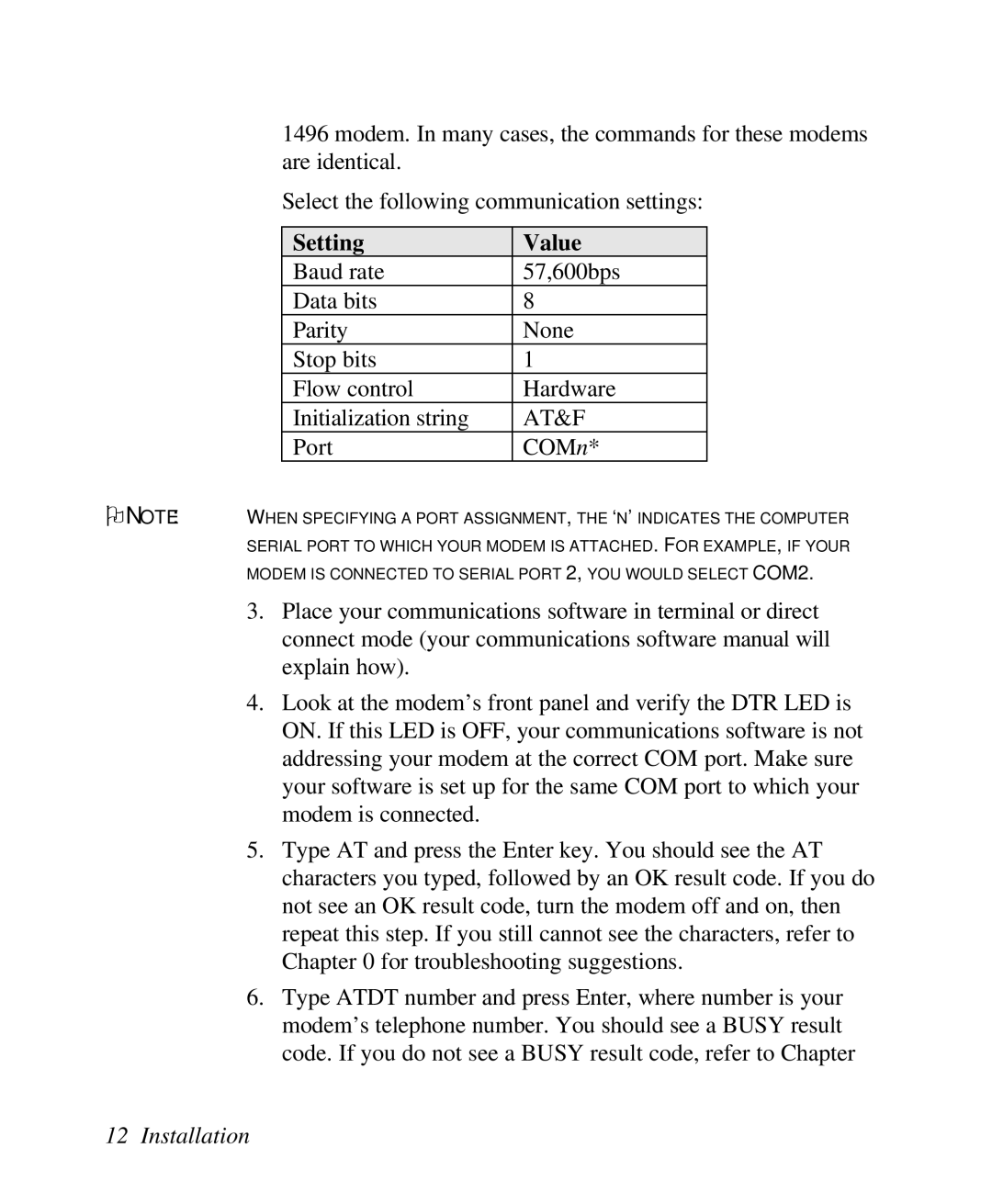1496 modem. In many cases, the commands for these modems are identical.
Select the following communication settings:
Setting | Value |
Baud rate | 57,600bps |
Data bits | 8 |
Parity | None |
Stop bits | 1 |
Flow control | Hardware |
Initialization string | AT&F |
Port | COMn* |
ONOTE: WHEN SPECIFYING A PORT ASSIGNMENT, THE ‘N’ INDICATES THE COMPUTER SERIAL PORT TO WHICH YOUR MODEM IS ATTACHED. FOR EXAMPLE, IF YOUR MODEM IS CONNECTED TO SERIAL PORT 2, YOU WOULD SELECT COM2.
3.Place your communications software in terminal or direct connect mode (your communications software manual will explain how).
4.Look at the modem’s front panel and verify the DTR LED is ON. If this LED is OFF, your communications software is not addressing your modem at the correct COM port. Make sure your software is set up for the same COM port to which your modem is connected.
5.Type AT and press the Enter key. You should see the AT characters you typed, followed by an OK result code. If you do not see an OK result code, turn the modem off and on, then repeat this step. If you still cannot see the characters, refer to Chapter 0 for troubleshooting suggestions.
6.Type ATDT number and press Enter, where number is your modem’s telephone number. You should see a BUSY result code. If you do not see a BUSY result code, refer to Chapter
